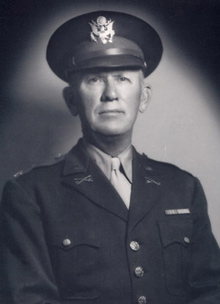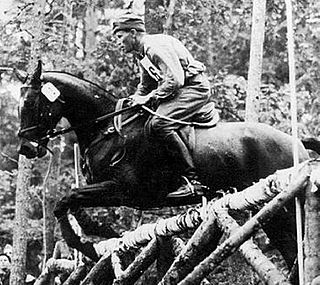
Equestrian events at the 2004 Summer Olympics featured three equestrian disciplines: dressage, eventing and jumping. All three disciplines are further divided into individual and team contests for a total of six events.

The equestrian program at the 1912 Summer Olympics in Stockholm, included five medal events. There were individual competitions in dressage, eventing, and show jumping. Team scores were also gathered and medals awarded for teams in the eventing and jumping competitions. Equestrian had been absent from the Olympic program since the 1900 Summer Olympics, making the 1912 Games the second time the sport was featured. Ten nations competed: Belgium, Chile, Denmark, France, Germany, Great Britain, Norway, Russia, Sweden, and the USA. Only Sweden and Germany were able to supply a full team for all three disciplines, with several countries having several riders and horses used in two or even all three disciplines. A total of 88 entries ran in the three events, with 62 riders and 70 horses.
The equestrian events at the 1920 Summer Olympics in Antwerp included eventing, show jumping, vaulting and dressage. The competitions were held from 6 to 12 September 1920. Although 89 riders were competing, many rode in more than one event, with 87 entries total. Vaulting was also held, its one appearance at an Olympic Games, with only Belgium, France and Sweden fielding teams.

The equestrian events at the 1952 Helsinki Summer Olympics included dressage, eventing, and show jumping. All three disciplines had both individual and team competitions and were held from 28 July to 3 August 1952.

The equestrian events at the 1956 Summer Olympics were held in Stockholm due to the Australian quarantine regulations and included dressage, eventing, and show jumping. All three disciplines had both individual and team competitions. The competitions were held from 11 to 17 June 1956 at Stockholm Olympic Stadium. There were 158 entries from 29 National Olympic Committees: Argentina, Australia, Austria, Belgium, Brazil, Bulgaria, Cambodia, Canada, Denmark, Egypt, Finland, France, Germany, Great Britain, Hungary, Ireland, Italy, Japan, Netherlands, Norway, Portugal, Romania, Soviet Union, Spain, Sweden, Switzerland, Turkey, USA and Venezuela. This would be the first appearance for Australia, Cambodia and Venezuela in equestrian events.

Egypt boycotted the 1956 Summer Olympics in Melbourne, Australia, because of the British and French involvement in the Suez Crisis. The equestrian events for the 1956 Games, however, were held in Stockholm, Sweden, five months earlier, due to Australian quarantine regulations, and three Egyptian riders competed in the show jumping events. None of the athletes won individual medals and they failed to place in the team competition due to one rider's failure to finish the individual tournament.

Norway competed at the 1956 Summer Olympics in Melbourne, Australia and Stockholm, Sweden. 22 competitors, 19 men and 3 women, took part in 18 events in 6 sports.
The team eventing was an equestrian event held as part of the Equestrian at the 1912 Summer Olympics programme. It was the first appearance of the event. The team score was simply the sum of the best three scores for each nation in the individual eventing competition.

The individual show jumping was an equestrian event held as part of the Equestrian at the 1912 Summer Olympics programme. The competition was held on 16 July 1912 as the Stockholm Olympic Stadium. There were 31 competitors from 8 nations. Each nation was limited to a maximum of six riders. The event was won by Jacques Cariou of France, the nation's first victory in the individual jumping. The victory came with a challenge prize presented by Count Gyula Andrássy the Younger of Hungary. Rabod von Kröcher earned Germany's first medal in the event with his silver. Emmanuel de Blommaert of Belgium took bronze.
The team jumping was an equestrian event held as part of the Equestrian at the 1912 Summer Olympics programme. It was the first appearance of the event. Unlike the team eventing competition, the team jumping was not simply a sum of scores from the individual jumping competition. Instead, riders competed in the team event separately a day after the individual event. Different riders could be used in the two events, and teams were limited to 4 riders while each nation could send 6 individuals.

Hiram Edwin Tuttle was an American equestrian who competed in dressage at the 1932 Summer Olympics and in the 1936 Summer Olympics. He is the only American dressage rider to win an individual medal at an Olympic Games. Tuttle was a lawyer in Boston prior to being a US Army quartermaster officer from 1930 to 1944. He owned and trained his own horses, unusual in a time when the majority of Olympic competitors rode Army-owned horses, and is buried near three of them at the cemetery in Fort Riley.
The individual dressage was one of five equestrianism events on the Equestrian at the 1924 Summer Olympics programme. The competition was held on Thursday, 25 July 1924. 24 riders from nine nations competed.
Gustav Fischer was a Swiss equestrian athlete who competed at five Summer Olympic Games, winning a total of five medals. He won medals in the team dressage events in the 1952, 1956, 1964, and 1968 games; there was no team dressage event held in 1960, but he won an individual dressage medal in that year.

Bengt Helge Ljungquist was a Swedish fencer, equestrian and military officer.

The individual dressage in equestrian at the 2012 Olympic Games in London was held at Greenwich Park from 2 to 9 August. Great Britain's Charlotte Dujardin won the gold medal and Laura Bechtolsheimer the bronze. The silver was won by Adelinde Cornelissen of the Netherlands.
The individual dressage at the 1956 Summer Olympics took place between 15 and 16 June, at the Stockholm Olympic Stadium. The event was open to men and women. The team and individual dressage competitions used the same results. Five judges gave scores, with the result being the sum of the scores.
The team dressage at the 1956 Summer Olympics took place between 15 and 16 June, at the Stockholm Olympic Stadium. The event was open to men and women. The team and individual dressage competitions used the same results. Five judges gave scores, with the result being the sum of the scores. The three individual scores were summed to give a team score.

The individual eventing at the 1956 Summer Olympics took place between 11 and 14 June, at the Stockholm Olympic Stadium. Eventing was open to men only. It was the 9th appearance of the event.
The team eventing at the 1956 Summer Olympics took place between 11 and 14 June, at the Stockholm Olympic Stadium. Eventing was open to men only. It was the 9th appearance of the event.











